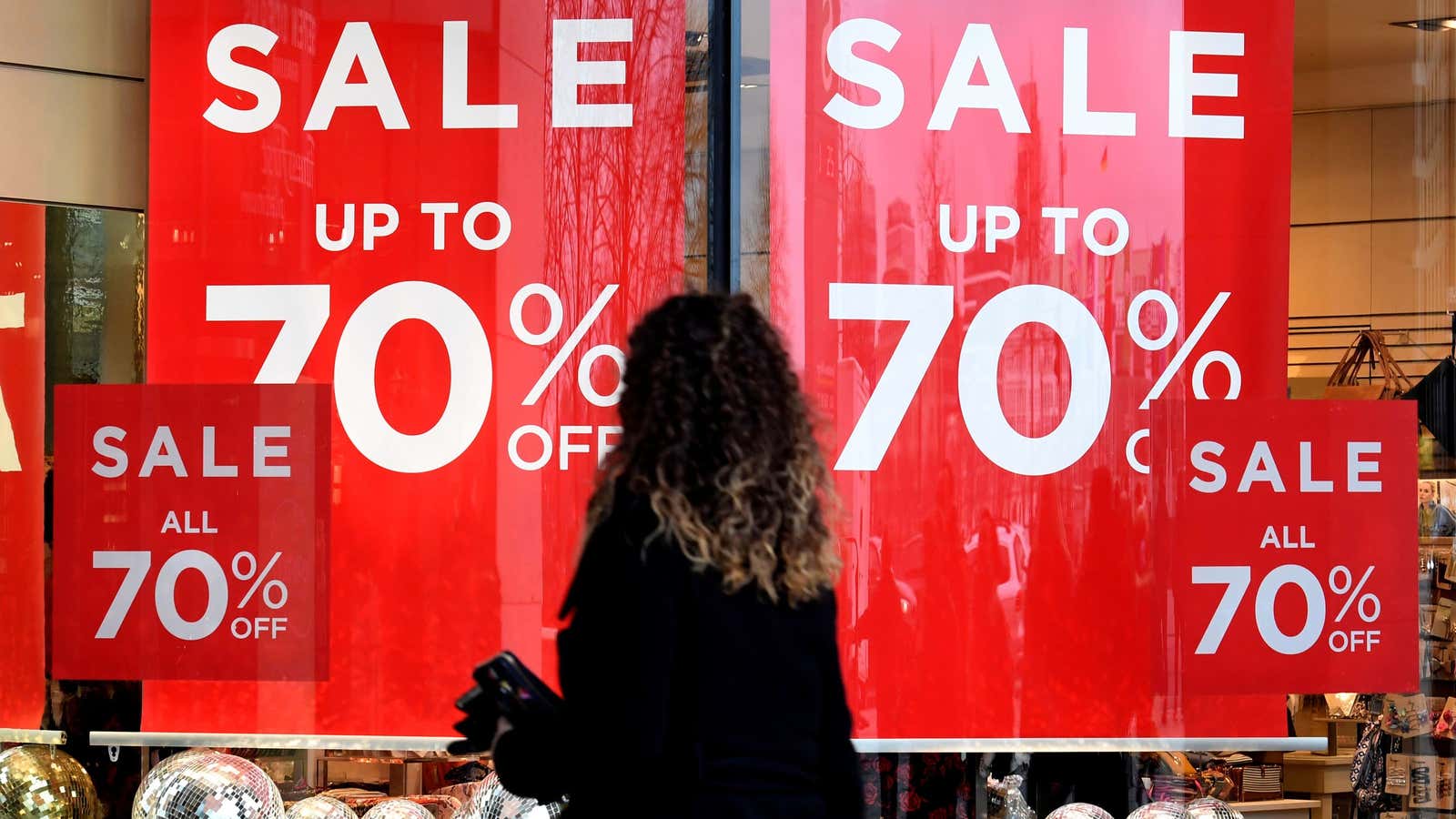2018 has been a landmark year for Indian e-commerce.
In May, the world’s largest retailer, Walmart, picked up a majority stake in India’s biggest homegrown e-retailer, Flipkart, for a massive $16 billion. Since then, the rivalry between Flipkart and Amazon India has only turned fiercer.
And now, just ahead of the peak festival season, the stakes are higher than ever.
Today (Oct. 10), Bengaluru-based Flipkart kicks off its annual flagship sale, Big Billion Days (BBD), while Amazon India opens its Great Indian Festival Sale to all shoppers after a 12-hour preview for members of its Prime service.
The two rivals alone are slated to capture nearly 85% of all festive season sales in India, which are estimated to touch between $2.5 billion and $3 billion this year, according to research firm RedSeer Consulting. “Every Diwali has been much better than the previous one,” said Manish Tiwary, vice-president of Amazon India.
Bigger and better
The cohort of online shoppers in India has grown, and how.
Last year, just 2.7% of India’s 500 million internet users made transactions online during the flagship sales of Amazon and Flipkart. This year, the share will climb up to 4% at around 20 million, RedSeer estimates.
Beating the 60% uptick in customers, gross merchandise value (GMV) will grow over 80% “because the same shoppers will shop more and for higher value items,” said Mrigank Gutgutiya, engagement manager at RedSeer.
He added that festive sales, an annual phenomenon for the past few years, are now maturing and that nurtures positive customer sentiment.
Clearly, no one wants to miss out.
All respondents in RedSeer’s customer sentiment online survey said they are aware of the sale dates, and 100% of them said they intend to make purchases. In 2017, just eight in 10 people were willing to do so.
Life beyond a metro
Though a majority of online shoppers in India are from metro cities, there has been a concerted effort to bring people from tier-2 and tier-3 cities into the fray. For instance, in a bid to woo vernacular users, Amazon enabled a Hindi language option on its website and app, ahead of the festive season.
“There are a bunch of customers in parts of the country who probably didn’t feel comfortable buying online given that it was in a language that was alien. So the Hindi app opens up hundreds of millions of customers say in northern, western parts or the east of the country,” Ravi Desai, director of mass and brand marketing at Amazon India, told Quartz in an interview.
Though few people (12%) surveyed by RedSeer were aware of Amazon’s Hindi language option, 28% of them showed a willingness to try it.
E-commerce sites are also spending big bucks on shaking up their marketing.
Flush with funds from the Walmart deal, Flipkart is splurging on cashing in on India’s two biggest crazes—Bollywood and cricket. The brand has roped in celebrities like Amitabh Bachchan, Deepika Padukone, and Virat Kohli for online ads and TV spots.
This has increased shoppers’ awareness of online sales.
‘Tis the season of home goods
Mobiles will continue to be the most sought-after segment this year, comprising 29% of all items sold. Fashion is a close second at 27%.
Large appliances and home goods, traditionally bought offline, are expected to be a big play this year, together accounting for 21% of goods sold. “This is a high-ticket category, which means they (e-tailers) can get very solid price margins,” RedSeer’s Gutgutiya said. “And over the last few years, platforms have been building supply chains and delivery networks, installing products and offering after-sales services for these products.”
Flipkart has forged exclusive partnerships with Blaupunkt and Xiaomi, expecting to log a 2.5X jump in large appliance sales. In the run-up to the sale days, the homegrown company has also launched a new range of refrigerators, TVs, and washing machines under its private label, MarQ.
Cash is still king
Debit cards, one of the most popular payment methods, could see further uptake this festive season, courtesy the new schemes like debit card EMIs allowing people to pay off their bills over an extended period of time.
However, customers are sceptical. Only 9% are willing to try out debit card EMIs, RedSeer found. “But that may change when shopping. Customers may get to the payment page and decide to use it,” said Gutgutiya. It could turn out to be a popular option since India has 944 million debit card users compared to a far lower 39 million credit cards.
Meanwhile, cash still rules for many Indians.
